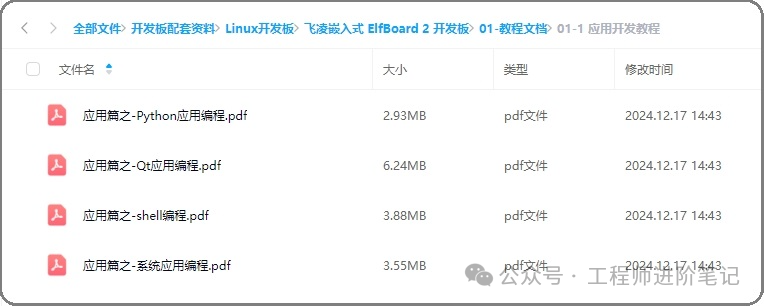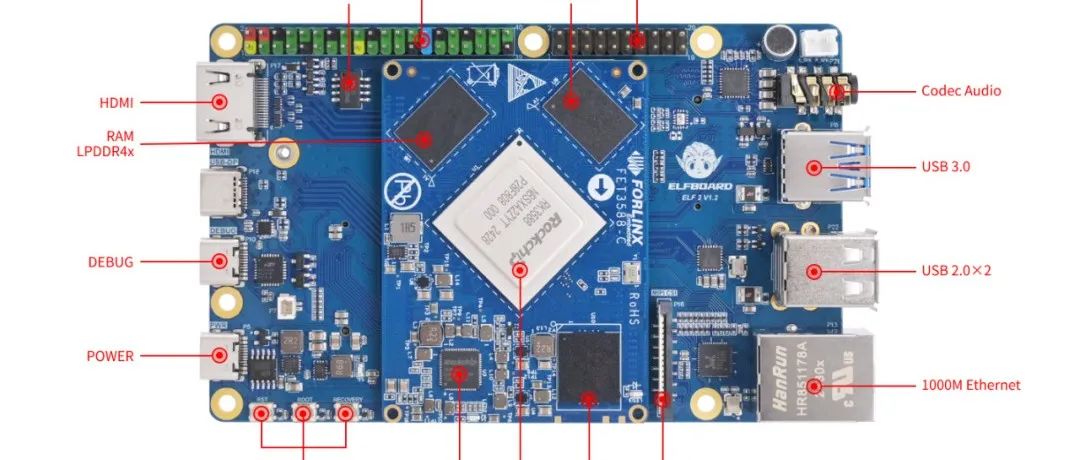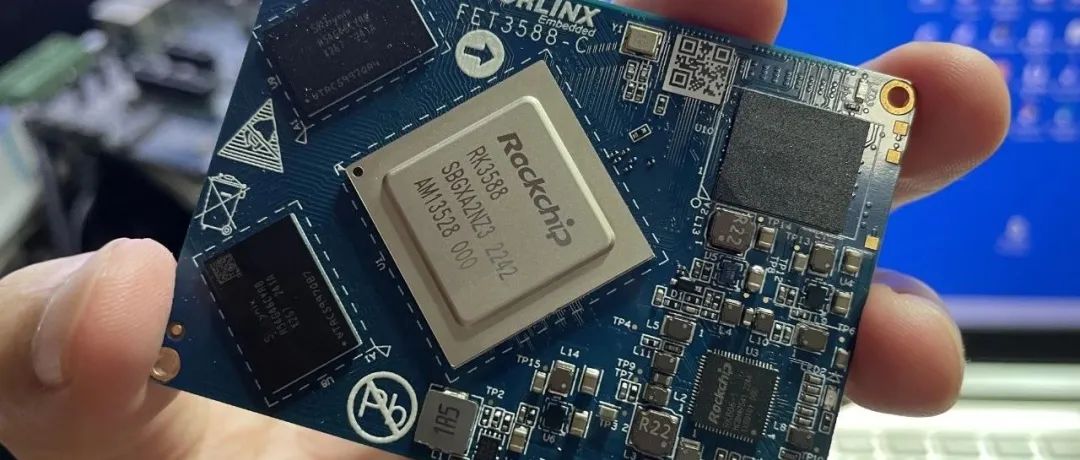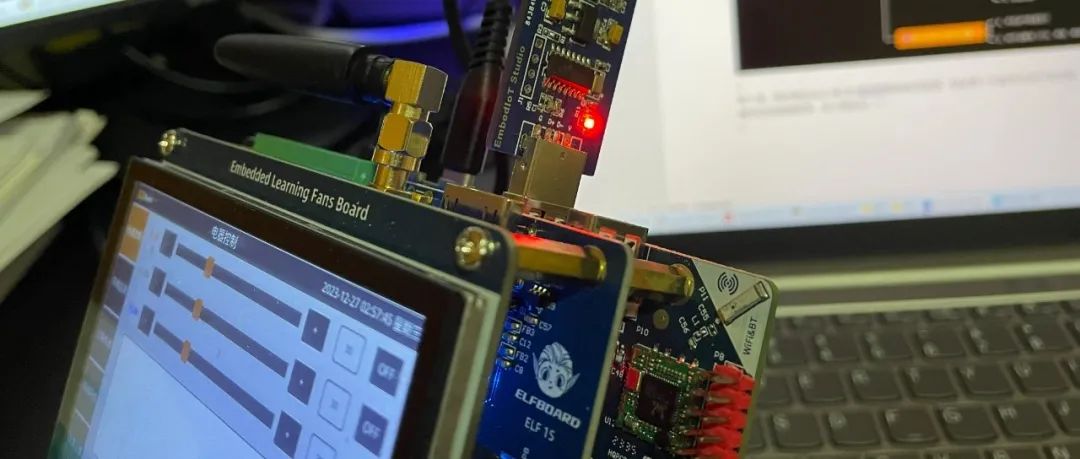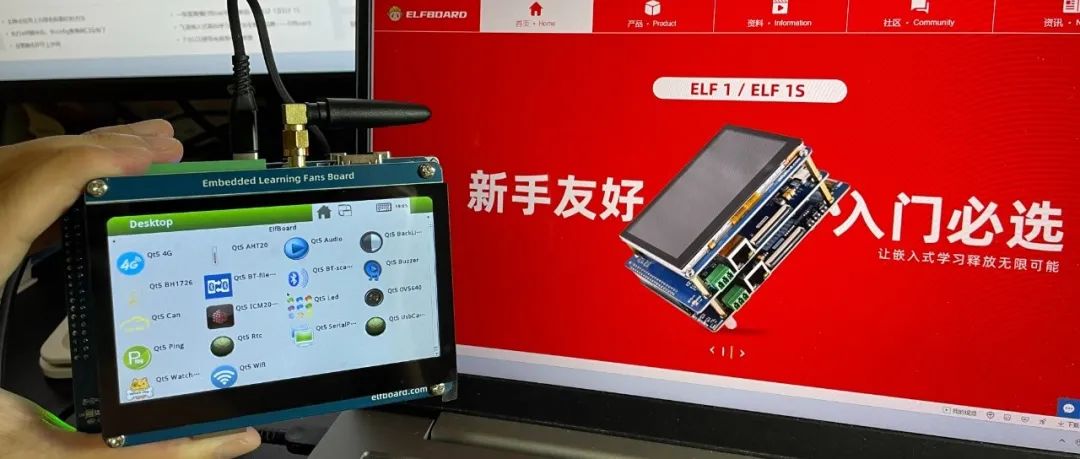I am Lao Wen, an embedded engineer who loves learning.
Follow me, and let’s become better together!
To help embedded developers reach a higher technical level, the educational brand ElfBoard under Feilin Embedded released the second-generation embedded AI advanced learning board ELF 2 on November 28.
So, I immediately contacted the ElfBoard official to apply for a ELF 2 learning board for evaluation and experience.
The second-generation embedded advanced learning board ELF 2 is designed based on the Rockchip RK3588 processor. With the powerful neural network processor (NPU) and multimedia processing capabilities of RK3588, it helps engineers advance better into the fields of embedded AI and multimedia processing.
(The first-generation embedded entry-level learning board ELF 1 and ELF 1S, can be found in previous technical articles on the official account.)
For detailed product information about ELF 2, you can visit the following link or click [Read the Original]
https://www.elfboard.com/product/49.html
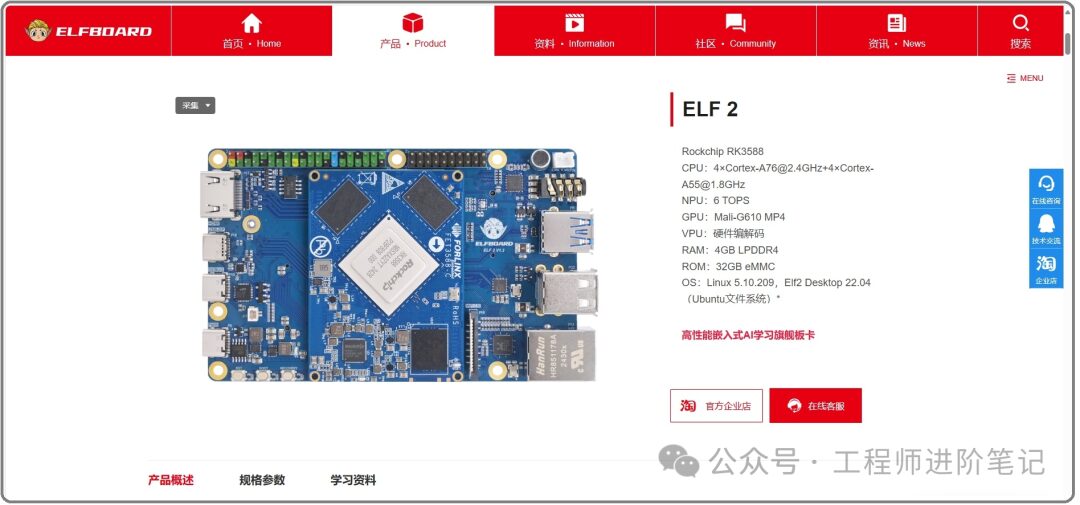
We will comprehensively evaluate this learning board aimed at embedded AI and multimedia advancement from the following dimensions: hardware resources, supporting materials, advantages and disadvantages, photo appreciation.
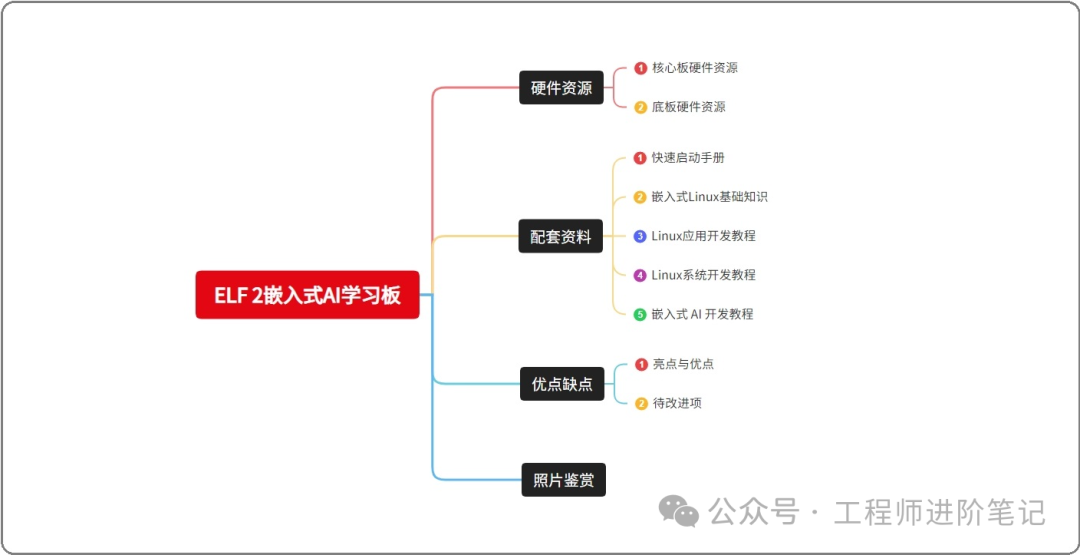
1. Hardware Resources of ELF 2 Learning Board
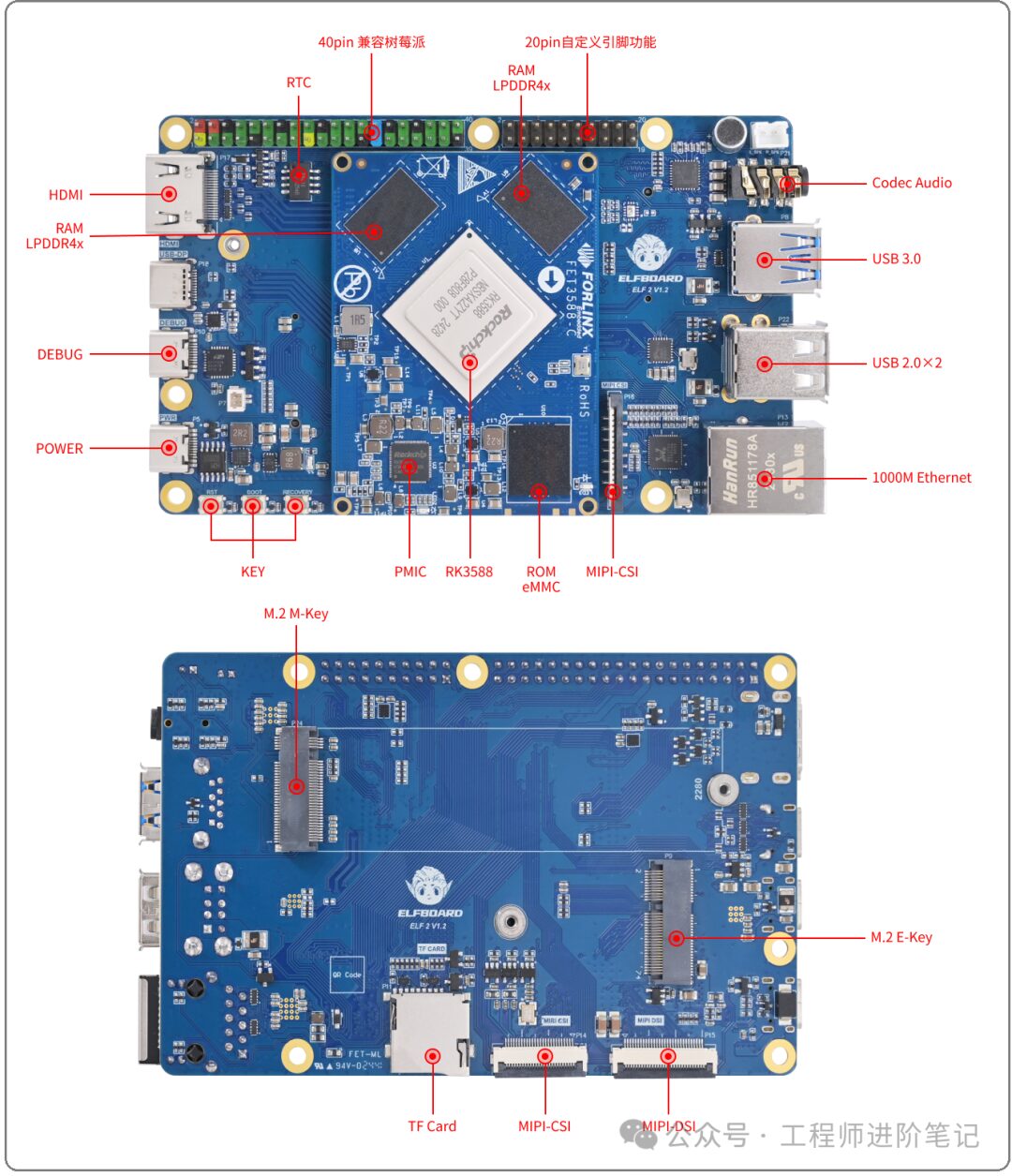
A picture perfectly illustrates the hardware resources of the ELF 2 learning board.
The main control CPU of the ELF 2 learning board is Rockchip’s RK3588. Engineers can search online for the performance parameters of this CPU. The learning board is designed in the form of a core board + base board, allowing the core board to be used in other projects at any time. (The highest resource utilization, the core board is expensive. )
The base board is designed to be very compact and simple (Goodness, it doesn’t even have USER-LED and USER-KEY). The reason it is not made into a large and comprehensive learning board is that I suspect this board is aimed at embedded AI and multimedia applications, so it only retains interfaces related to multimedia such as Gigabit Ethernet, HDMI, USB, Codec Audio, MIPI-CSI, and MIPI-DSI.
(I believe that the ElfBoard official made this subtraction after comprehensive consideration. A large and comprehensive board can consider Feilin’s OK3588-C development board.)
The back of the base board retains two M.2 type interfaces, which can be used to connect NVMe solid-state drives and Wi-Fi communication modules, greatly expanding disk capacity and network communication methods, effectively making it a small desktop computer.
Because the base board has a 40Pin expansion pin compatible with Raspberry Pi and provides a 20Pin free expansion interface, embedded DIYers can create some expansion boards on it, leaving ample space for embedded engineers to unleash their creativity.
2. Supporting Materials for ELF 2 Learning Board
As a teaching-oriented development board product, supporting materials are the most important. All materials for ELF 2 are available on the official website, and a free high-speed download service is provided. Before purchasing the board, users can download the materials for browsing.The material link is as follows:
https://www.elfboard.com/information/detail.html?id=7
)
The base board is designed to be very compact and simple (Goodness, it doesn’t even have USER-LED and USER-KEY). The reason it is not made into a large and comprehensive learning board is that I suspect this board is aimed at embedded AI and multimedia applications, so it only retains interfaces related to multimedia such as Gigabit Ethernet, HDMI, USB, Codec Audio, MIPI-CSI, and MIPI-DSI.
(I believe that the ElfBoard official made this subtraction after comprehensive consideration. A large and comprehensive board can consider Feilin’s OK3588-C development board.)
The back of the base board retains two M.2 type interfaces, which can be used to connect NVMe solid-state drives and Wi-Fi communication modules, greatly expanding disk capacity and network communication methods, effectively making it a small desktop computer.
Because the base board has a 40Pin expansion pin compatible with Raspberry Pi and provides a 20Pin free expansion interface, embedded DIYers can create some expansion boards on it, leaving ample space for embedded engineers to unleash their creativity.
2. Supporting Materials for ELF 2 Learning Board
As a teaching-oriented development board product, supporting materials are the most important. All materials for ELF 2 are available on the official website, and a free high-speed download service is provided. Before purchasing the board, users can download the materials for browsing.The material link is as follows:
https://www.elfboard.com/information/detail.html?id=7
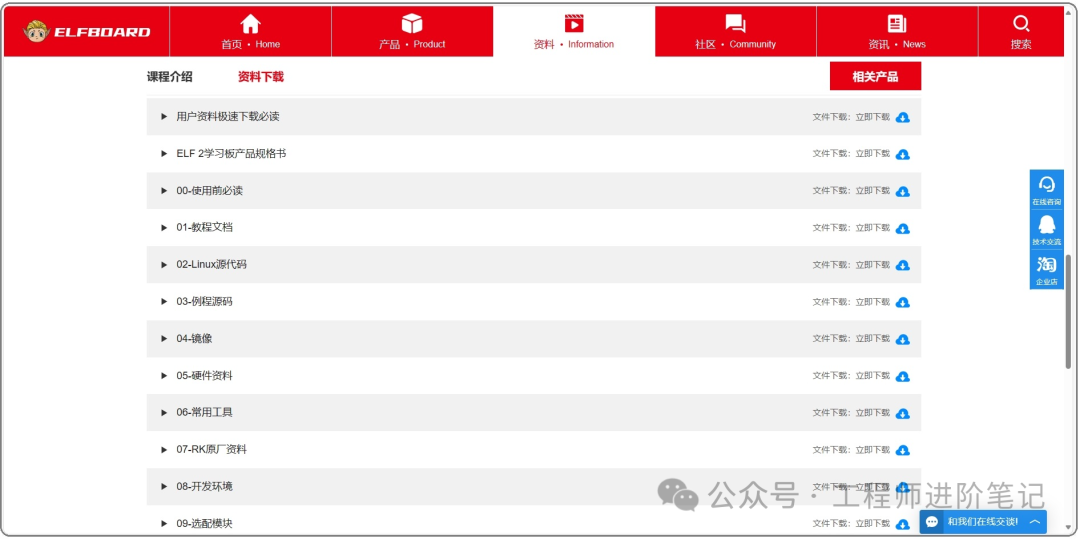
The overall planning of the material directory is quite considerate. The “User Material Quick Download Read Me” and “ELF2 Learning Board Product Specification” mainly guide users on how to download materials and get a preliminary understanding of the ELF 2 learning board’s product specifications. These two items do not need to be downloaded; they can be opened directly in the browser for reading.
After downloading the materials, it is recommended that developers carefully read the contents in the [00-Pre-usage Must Read] folder, which includes “Embedded Linux Learning Route.pdf” and “User Material Directory.pdf”. The “Selection Manual.pdf” is still being improved.
The contents in the [01-Tutorial Documents] folder are very rich and are also the most concerning parts for many embedded developers. The “Development Board Quick Start Manual.pdf” is almost a standard document for development board products, allowing us to quickly power on and start after receiving the physical development board.
Foundation is key. The development materials provide “Basic Introduction to Linux System.pdf” and “General Knowledge of Embedded Interfaces.pdf”. Before starting a series of studies, it is advisable to quickly read through these to have a basic impression of the foundational knowledge.
The documentation for the ELF 2 learning board is mainly written around the following aspects: application program development, system porting and driver development, hardware development, embedded AI development.
Application Program Development: It provides content on Python, Qt, Shell programming, and system application programming, almost covering all learning scenarios for application development. Developers can learn as needed based on their usual work direction.
System Porting and Driver Development: These two areas are tough nuts to crack, and the learning difficulty is relatively high. The tutorial provides guidance on setting up the development environment, basic driver porting, analysis of commonly used subsystems, and file system construction.
Hardware Development: Embedded software development cannot be separated from learning hardware principles. Therefore, ELF 2 continues the advantages of ELF 1 by providing a highly valuable “ELF 2 Development Board Hardware Tutorial.pdf”, which comprehensively analyzes the key circuit principles of the development board, filling the gap in embedded hardware entry-level knowledge.

Embedded AI Development: This is also a major highlight of the ELF 2 learning board, providing a complete entry-level document for embedded AI, covering model training to deployment, introducing deep learning frameworks and classic models, and how to use RKNN-related tools for model deployment.

3. Advantages and Disadvantages of ELF 2 Learning Board
Next, based on my personal subjective feelings, let’s talk about the areas where the ELF 2 learning board needs improvement.
Improvement 1: Currently, only tutorials related to embedded Linux and Ubuntu 22.04 file systems are provided. Tutorials for Android and OpenHarmony, as well as project development-related content, are still being written. Engineers who want to use the latter two operating systems may have to wait a bit longer.
Improvement 2: The Raspberry Pi-compatible 40Pin and custom 20Pin expansion pins currently do not have supporting hardware modules and tutorials. I guess this is because ELF 2 has just been launched, and these modules are still under development and design. I look forward to ElfBoard quickly launching these expansion module hardware and tutorials.
Improvement 3: Adding a power supply and buckle interface for the heat sink on the base board may be more convenient (the OK3588-C development board has this design), the CPU heat sink needs to be secured through the shell with or without a buckle, and needs to interface with the expansion interface on the base board for control. I suspect this is because this board is very compact. If two screw holes were added for the heat sink buckle, it might affect the overall layout and wiring.
Improvement 4: Strictly speaking, the price is not really a point for improvement, (comparing prices alone is not very meaningful), although price is one of the concerns for many young beginners. It is natural for them to compare prices directly, but I believe the official pricing was made after various market surveys (the FET3588-C core board is not cheap), and I hope ElfBoard will hold more events in the future to further reduce the learning costs for young people.
Now let’s talk about the advantages.
Advantage 1: Compact size and high expandability, thanks to the reliable hardware design of ELF 2, it can almost be directly embedded into hardware products such as advertising machines, industrial computers, edge servers, etc. Basically, equipping ELF 2 with a shell (adding a solid-state drive and upgrading the core board configuration) can turn it into a small desktop computer.
Advantage 2: The hardware design tutorial and embedded AI tutorial are highly valuable. The reason for spending effort on writing the hardware design tutorial is that ElfBoard believes embedded software engineers also need to learn the basic principles of hardware to excel in actual debugging work. As a new learning direction, ElfBoard is also gradually teaching developers how to deploy and run deep learning models.
Advantage 3: The compact board integrates rich multimedia hardware interfaces, such as HDMI, USB-DP, and MIPI-DSI for display, which can be used simultaneously, supporting three-screen display and dual MIPI-CSI camera inputs, as well as Gigabit Ethernet and Codec Audio. Most interfaces are designed for multimedia applications.
Advantage 4: Comprehensive application development tutorials covering embedded Linux system programming, Qt applications, Shell programming, and Python programming. The benefit of designing tutorials this way is that developers or beginners can first approach the field of embedded AI and multimedia applications from the perspective of application programs, without being deterred by difficult multimedia drivers.
Advantage 5: To encourage developers to persist in learning and sharing technology, ElfBoard offers tangible rewards to developers who achieve success, holding discount events from time to time, such as the recent: Let embedded engineers return to creativity! (click the article link)
In summary, the ELF 2 learning board, a high-performance learning board, is mainly aimed at users who have completed basic entry-level embedded Linux development. It provides materials focusing on embedded AI and multimedia technology, maximizing the performance advantages of the RK3588 CPU.
The small size of ELF 2, combined with its commercial-grade reliable design, allows it to be easily embedded into other products or equipped with a shell to become a small desktop computer. Coupled with Raspberry Pi-compatible 40Pin pins, it enables embedded DIYers to better unleash their creativity.
4. Actual Photos of ELF 2 Learning Board
(Using a mobile phone for non-professional shooting, please bear with me~)
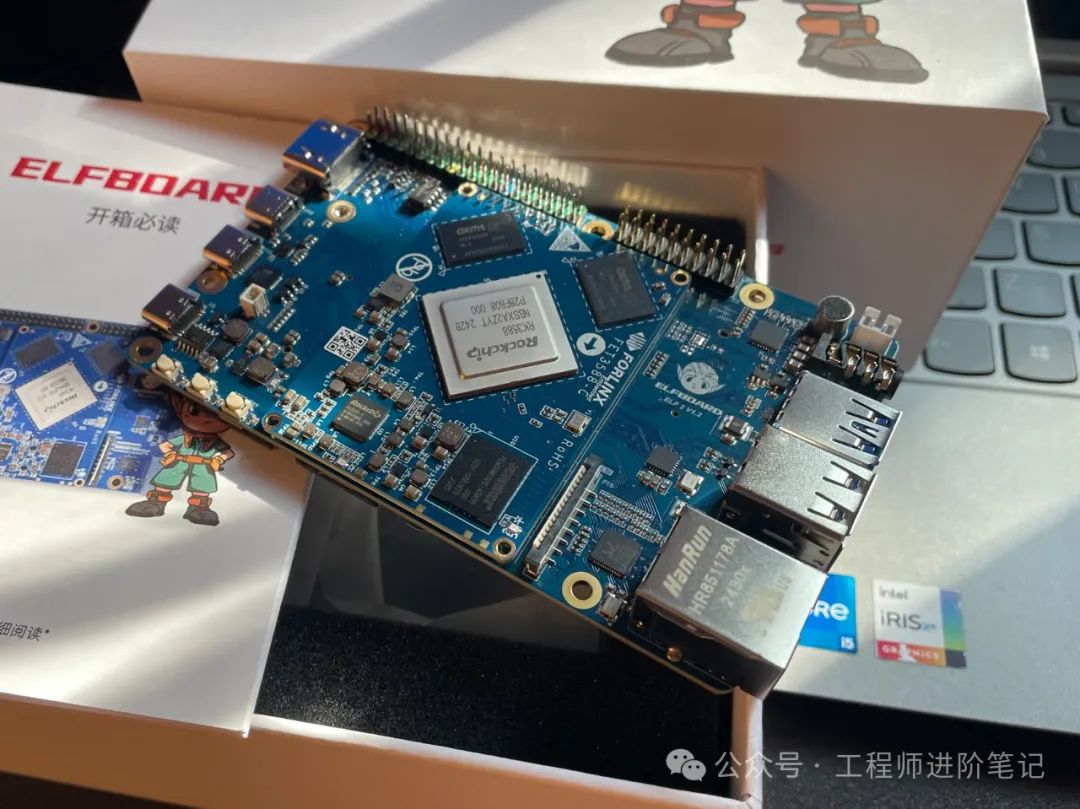
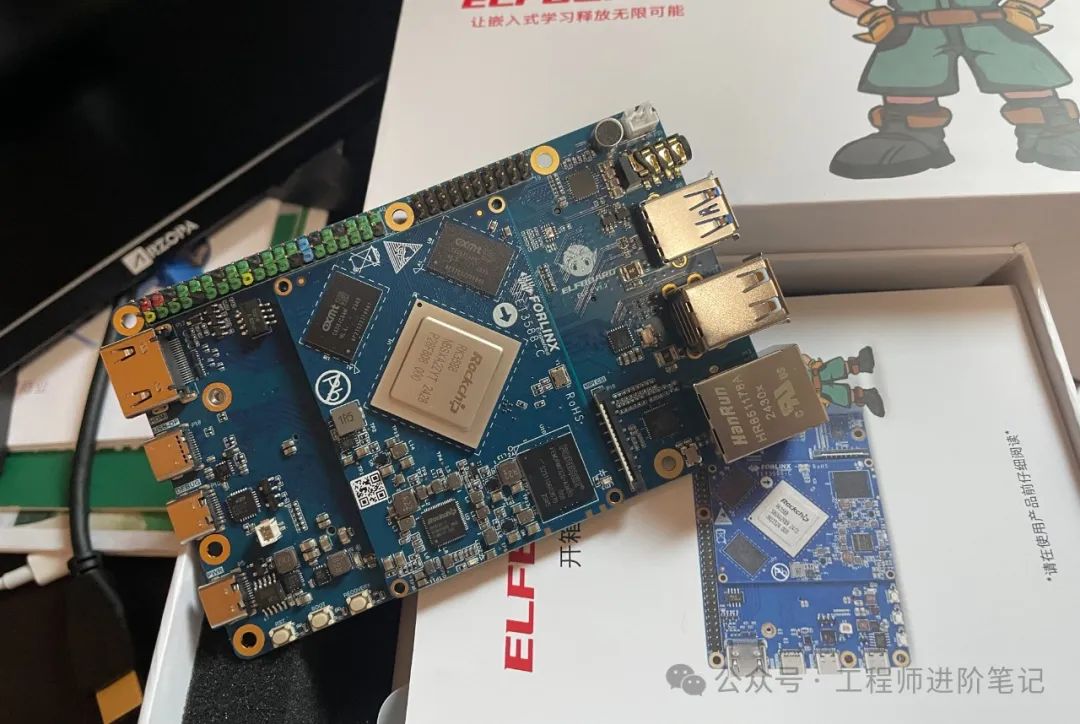
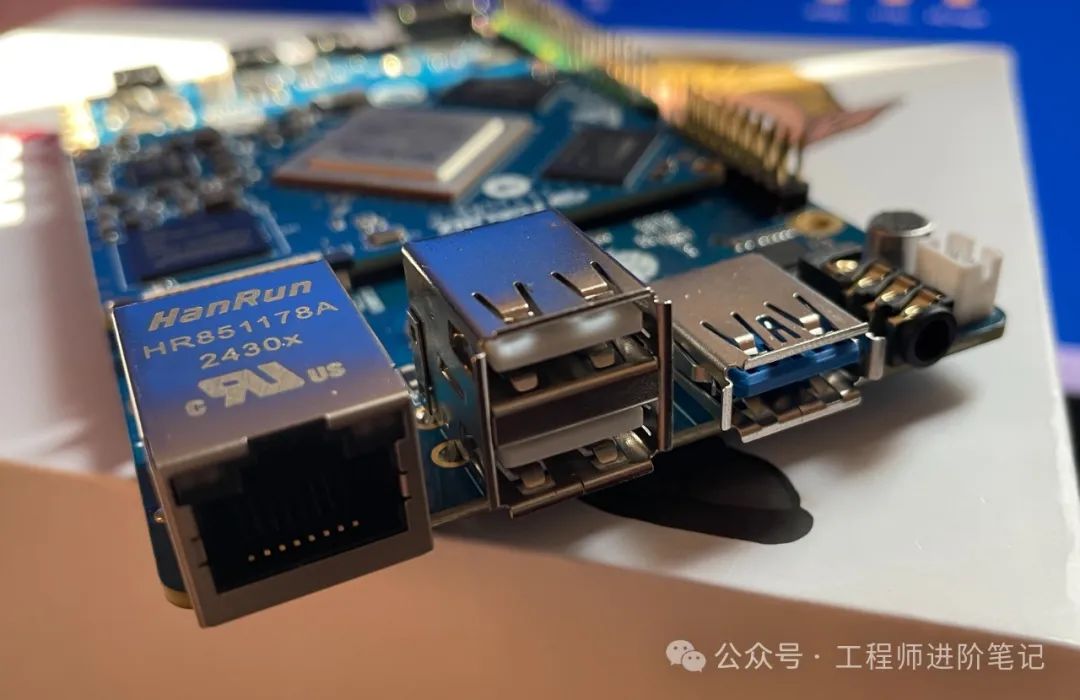
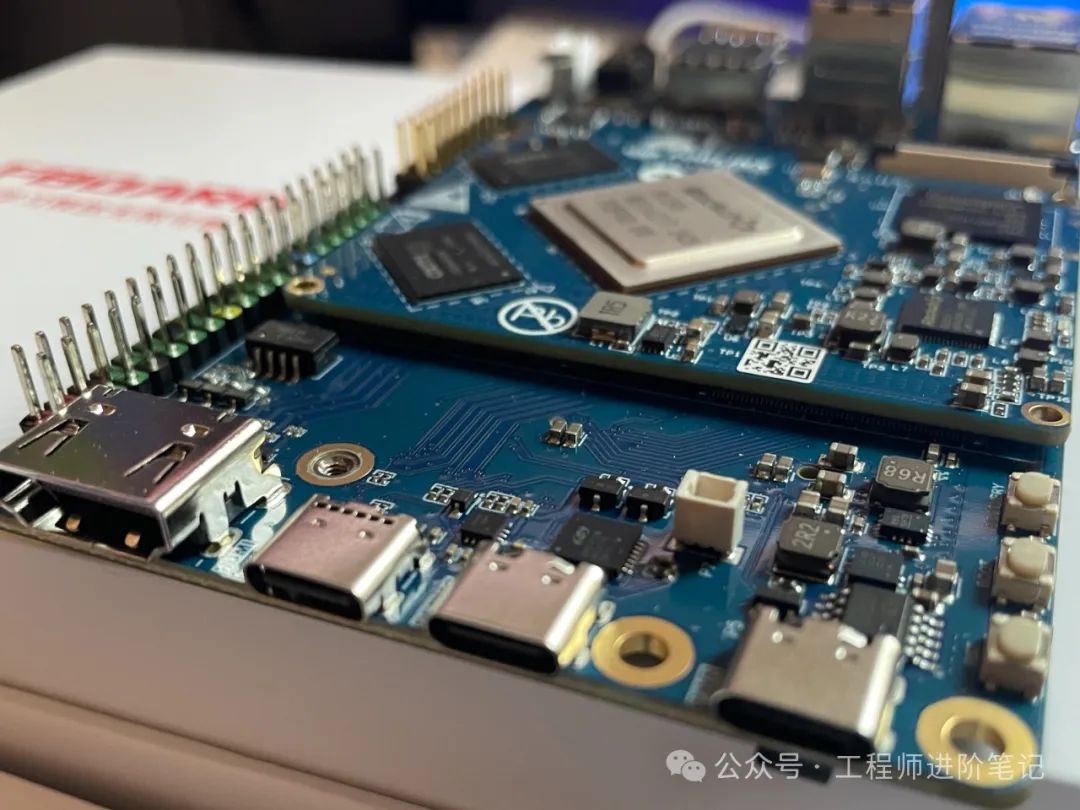
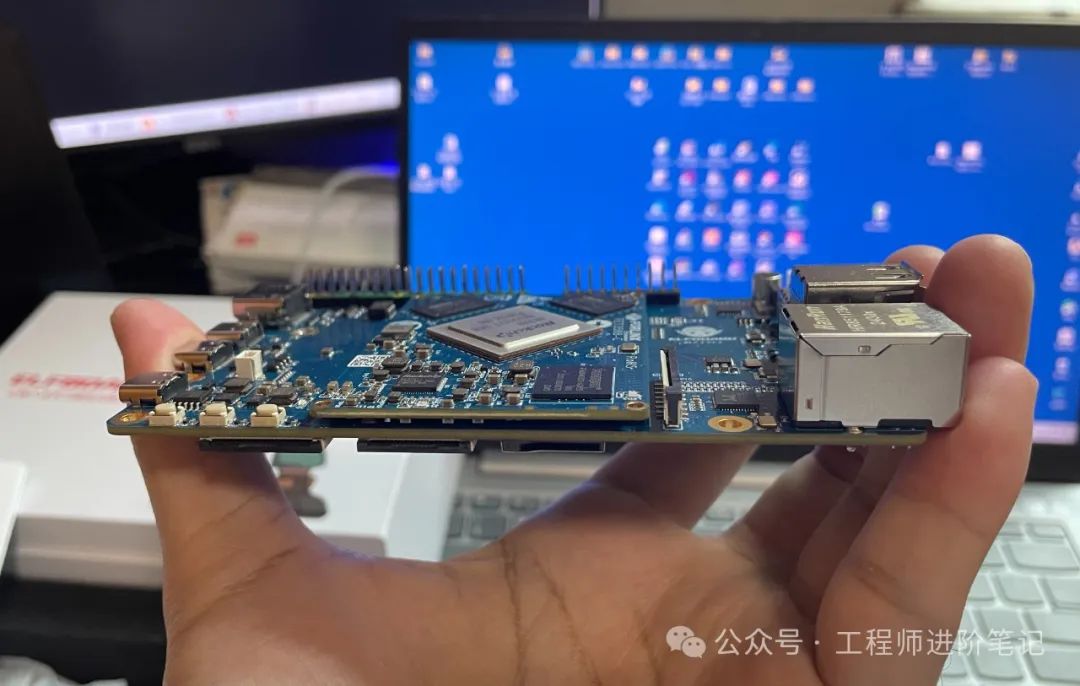
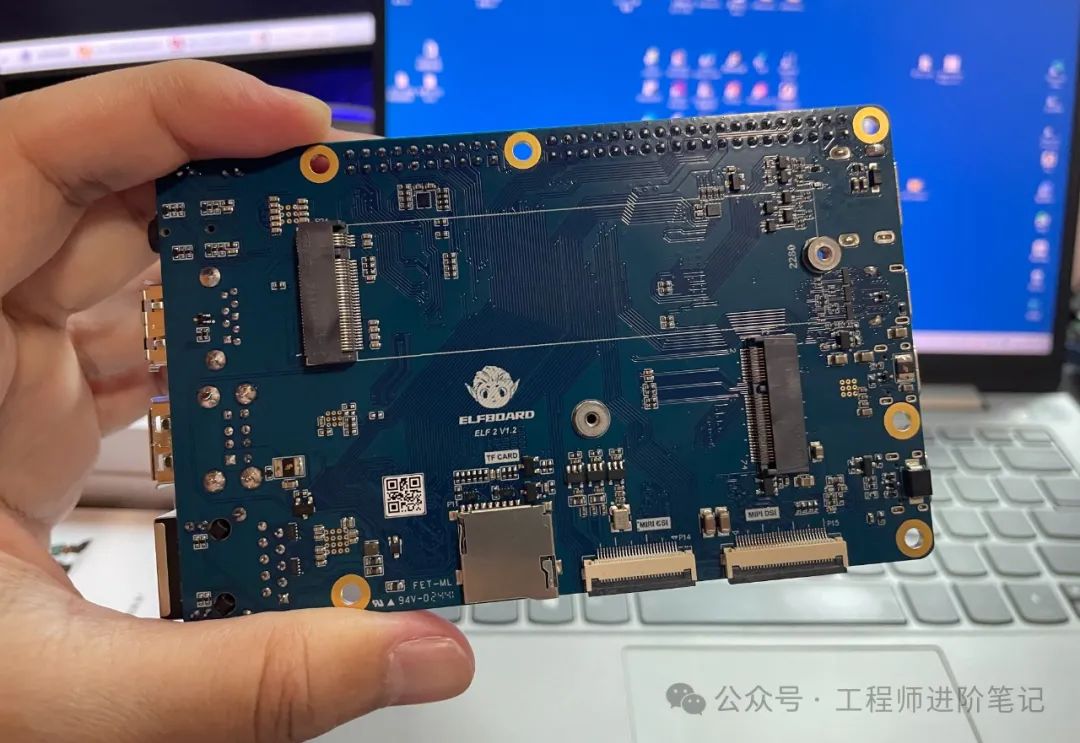
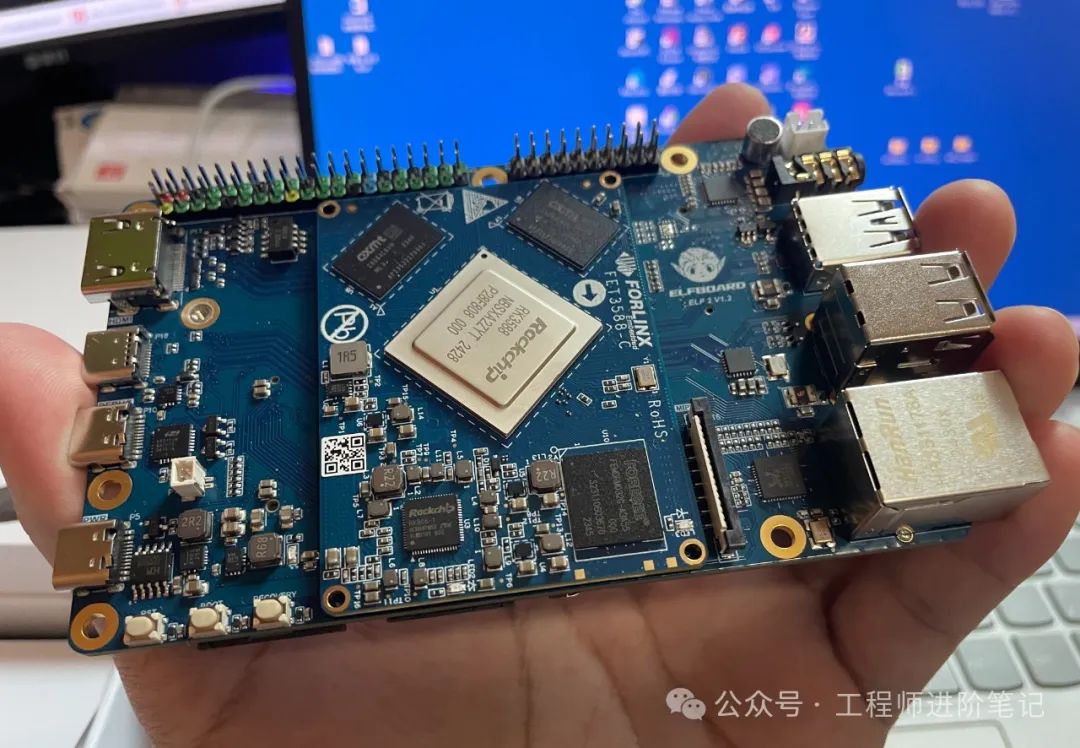
-END-
Previous Recommendations: Click the image to jump to read
Let embedded engineers return to creativity!
How should embedded beginners start advanced learning after the entry-level?
Started an IoT open-source project, let’s roll up our sleeves in embedded!
If you want to learn embedded systems, rather than just watching, it’s better to take action!
I am Lao Wen, an embedded engineer who loves learning.
Follow me, and let’s become better together!



 )
)
